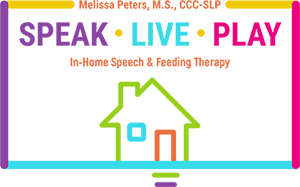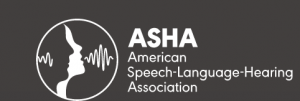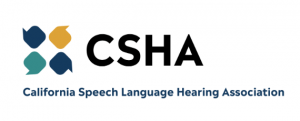Speech Therapy for Tracheostomy and Mechanical Ventilation Patients
Speech therapy is an integral part of any efforts aimed at helping those afflicted with speech, swallowing, cognitive, or language difficulties. The causes here may vary, but specialists, such as you will find at Speak live play, are trained to provide expert care and develop highly effective, result-producing therapy initiatives.
What do Tracheostomies and Mechanical Ventilation Involve?
Under various conditions, patients might find themselves experiencing breathing difficulties that will require medical intervention to help alleviate. Two such interventions are the placing of tracheostomy tubes and the use of mechanical ventilators. A tracheostomy (also referred to as a tracheotomy) is an opening made by a medical professional in the patient’s windpipe (trachea).
This opening is what will then allow for the passage of air into and out of the patient’s lungs as opposed to the nose or mouth. For some people, this might be a temporary measure, as in cases where the patient is recovering from surgery in the affected regions, but some people might need to have this in place for the rest of their lives.
Mechanical ventilation goes hand-in-hand with tracheostomies in cases where the patient requires additional help in pumping air into and out of their lungs. Ventilators can be simply referred to as breathing machines, which basically do the work of the muscles responsible for generating the energy needed to inhale and exhale.
How Mechanical Ventilation and Tracheostomies Affect Speech and Communication
These medical interventions will have a profound effect on a person’s speech due to the mechanisms which we use to generate the sound needed for speaking. Speaking involves moving air up from the lungs and past the vocal cords in our throat before it exits our mouth as sound. It is the vibration of our vocal chords and our manipulation of our tongue, mouth, and palates that translates these vibrations into sensible speech.
With a tracheostomy in place, air coming up from a patient’s lungs will be expelled through the opening at the base of their throat before getting to the vocal cords, meaning that no sound and no speech can be produced. Thankfully, there are ways to facilitate speech in such patients, even those on a mechanical ventilator.
With a simple tracheostomy in place, covering up the opening will allow the air coming up from the lung to be directed up and out through the mouth and nose, thus allowing for speech. One device that performs this role is known as a speaking valve.
This device allows air to come in through the tracheostomy opening, but will automatically close shut when air tries to pass out through it, thereby allowing only for the one-way passage of air. This device requires a certain type of tracheostomy tube to function as it should, and patients will have to be screened for their suitability.
For those who require the aid of a mechanical ventilator to draw air in and push it out, things are a bit different. Should your oral and nasal passages be in good working condition, the air moving past the vocal cords will allow for speech to take place. The difference will be that, due to the cyclical nature of a ventilator’s operation, patients will only be able to speak during each cycle – having to regularly pause between each of the cycles.
In addition to this, the patient’s voice might be considerably changed, becoming louder or softer than usual depending on the type and operational settings of the mechanical ventilator in use. It has to be kept in mind that the working of a mechanical ventilator cannot be counted on to be as efficient as the natural working of the lungs and all other components involved in producing sound and speech.
Speaking with a patient using a speaking valve will call for a certain amount of consideration and patience on everyone’s part. The cyclical nature of ventilation machine operation will mean that the pauses between speech will be unnaturally elongated, meaning the usual give-and-take nature of conversation will be somewhat strained.
Speech Therapy for Tracheostomy and Mechanical Ventilation Patients
Patients who have undergone a tracheostomy procedure will likely require help to overcome the accompanying effects which include difficulties with speech and swallowing. Speech therapists and pathologists are experts who are dedicated to helping people with these types of problems, working hand-in-hand with general medical practitioners and surgeons.
The first step a speech therapist will take is to make an assessment of the patient’s condition and the difficulties they face. An assessment of the patient’s cognitive and communicative abilities, their swallowing and oral-motor functions, and their potential capability to produce sound or do so while using a speaking valve will be involved at this initial stage. All this will go towards informing their decision as to the most effective and patient-friendly approach to take.
This is important because not all solutions will be suitable across the board.
Considerations with regard to patient condition, age, mobility, and more will have to be factored in for a truly optimal solution. Speaking valves are not compatible with all tracheostomy candidates.
A patient without a speaking valve will, for instance, have to be trained on how to appropriately cover and release the opening of their tracheostomy tube in order to facilitate their speech. Should this option not be available, as in cases of extensive body paralysis, then other methods will have to be employed.
These methods are generally referred to as alternative or augmentative communication methods, and fall under two broad classifications, namely; aided and unaided systems. In the majority of cases, clients will undergo therapy involving some combination of both systems, depending on their condition and capabilities.
Unaided systems of therapy are those that do not require the introduction of any external device or facilitating mechanism to carry out. The patient’s own body and biological mechanisms are all that will be required here, and these will include not only their traditional speaking apparatus, but body language, signing, and facial expressions to communicate with others.
Aided systems will involve the use of certain devices or tools to facilitate communication. Some of these will be very basic in nature, such as a pen and paper, sign-boards, and such. More sophisticated devices will include computers, mobile phones, speech generators, and such. Advanced speech generators have the capacity to produce vocalized text in a variety of languages and with an ever-expanding vocabulary.
Goals of Speech Therapy for Tracheostomy and Mechanical Ventilation Patients
Some of the high-profile public figures to have undergone tracheostomies include the likes of actor Christopher Reeves and scientist Stephen Hawking. What necessitated the procedure in these two is different in each case, with Reeves having had a horse-riding accident and Hawking suffering from a debilitating neurological disease, both of which, unfortunately, saw them confined to wheelchairs with extensive paralysis of the body.
Even in these instances, extreme though they may be, the intervention of speech therapists in various ways allowed them to continue leading their lives in as normal a manner as possible under the circumstances. This is the overriding goal of speech therapy.
Each patient will have a set of goals formulated by their speech therapist in accordance with what is possible in their particular circumstance and what will get them closest toas high a standard of living as possible.
The general areas they will be looking into as they make this evaluation will be as follows:
- What does the patient do for a living?
- What does the patient rank as most important?
- What are the patient’s hobbies, likes, and dislikes?
- How active or involving is the patient’s social life?
- What will the typical day look like for the patient? Are there people around them to help them facilitate their day-to-day operations?
- What are the patient’s personal goals?
As you might imagine, the answers to these questions will vary significantly from person to person, say, for example, between a professional opera singer and a work-from-home computer programmer. A speech therapist is trained to consider all these factors and more that you might not even think of before coming up with a therapy regimen that will work best to achieve these objectives.
Why Choose Speak live play
When it comes to speech therapy, attention to detail and specialized attention makes all the difference. With Speak live play, you will receive the most intensive, patient-oriented care possible from an experienced specialist, able to help will all language, speech, cognitive, and swallowing disorders that may be hampering the clients’ efforts to communicate and enjoy their day-to-day life.



